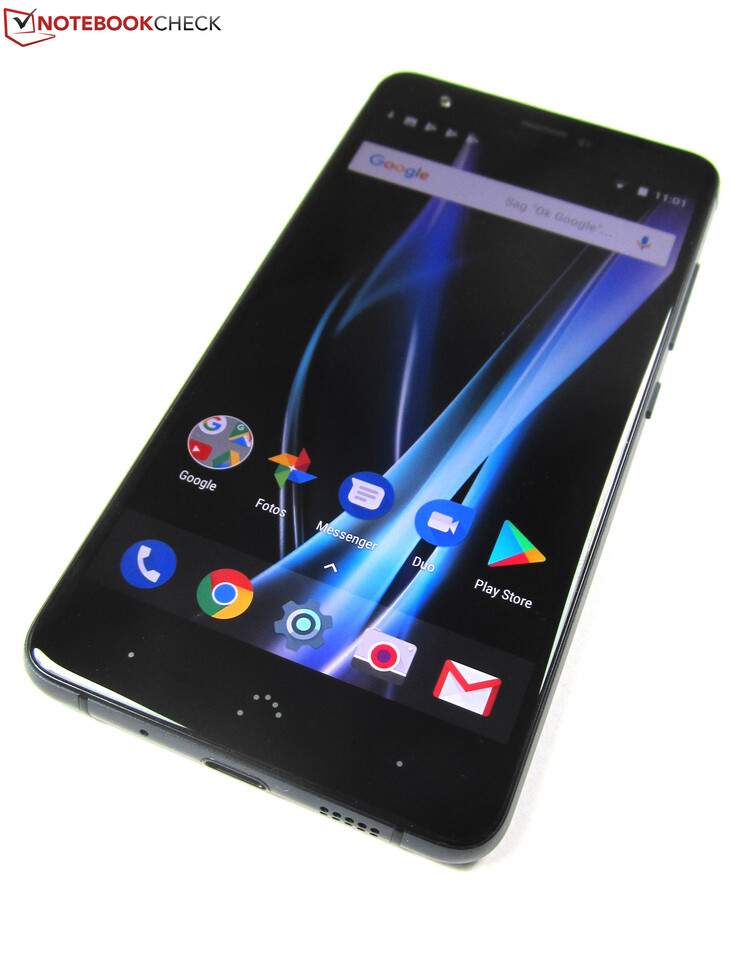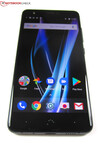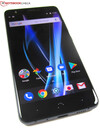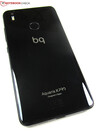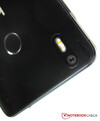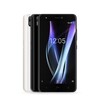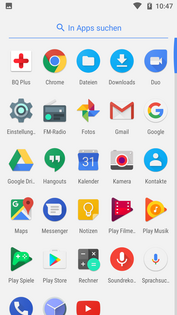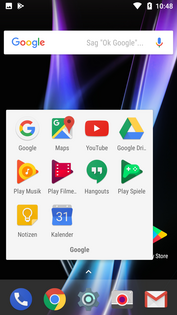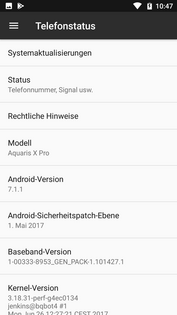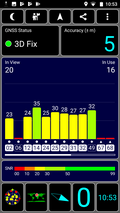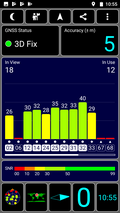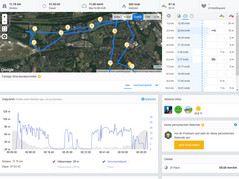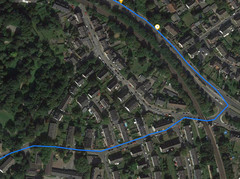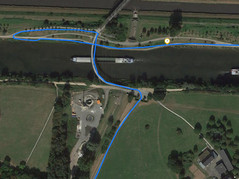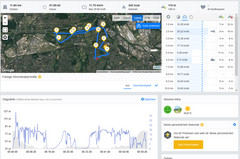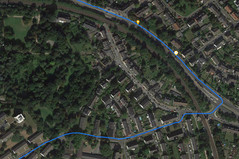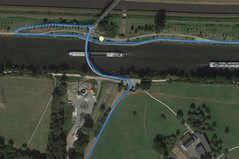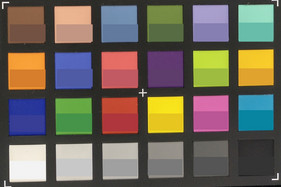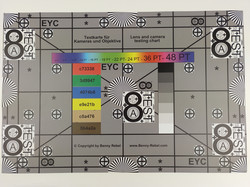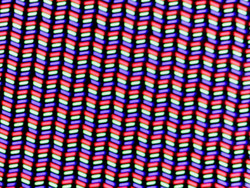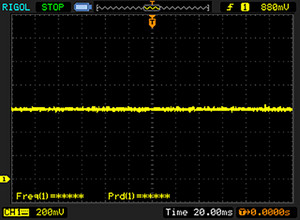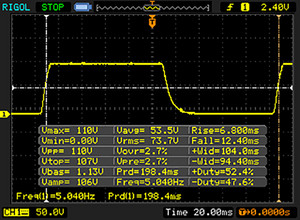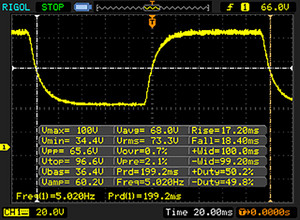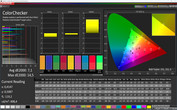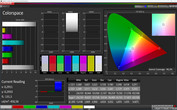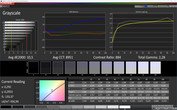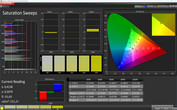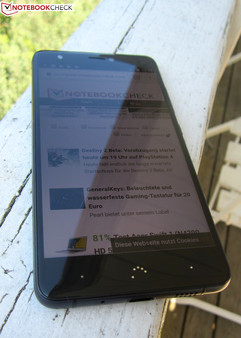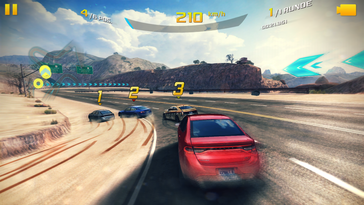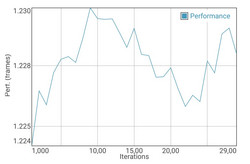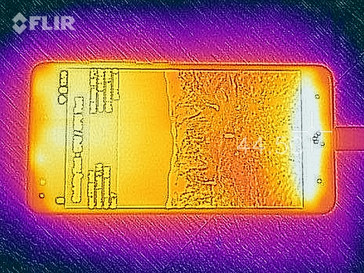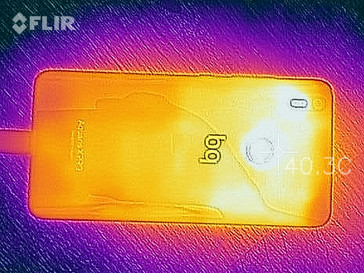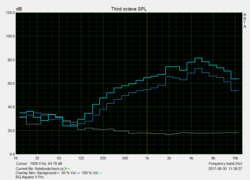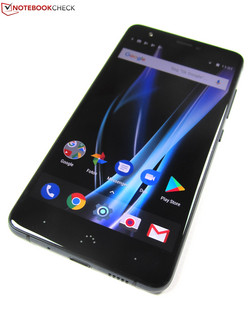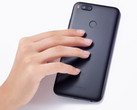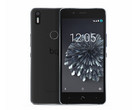BQ Aquaris X Pro Smartphone Review

For the original German article, see here.
With the Aquaris X Pro, Spanish smartphone-manufacturer BQ stakes its claims in the highly competitive mid-range smartphone battleground. The contestant’s configuration is very respectable indeed: for between $400 and $470 you get a 5.2-inch FHD display embedded in a classy metal/glass chassis powered by a Qualcomm Snapdragon 626 octa-core SoC, a Qualcomm Adreno 506, up to 4 GB of RAM, and up to 128 GB of storage.
The good news doesn’t stop there. The Aquaris X Pro runs the latest Android 7.1 operating system and features a 12 MP main camera, a fingerprint-reader, a dual-SIM slot, LTE Cat.6, 802.11ac Wi-Fi, Bluetooth 4.2, and NFC.
Mid-range competitors are aplenty, and most of them are somewhat similarly equipped. For the sake of this review, we’ve decided to compare it to the Honor 8, the Huawei Nova Plus, the Samsung Galaxy A5 (2017) and the ZTE Axon 7.
If you want to spend less than $400 on a smartphone, the roughly $100 cheaper BQ Aquaris X offers an equally large 5.2-inch display and very similar hardware. The main differences to the X Pro are its camera and storage options.
Update 4/18/2018: BQ has released a firmware update. Details can be found in the software section.
Case
Despite the fact that BQ positions the X Pro in the mid-range market, the phone can easily compete with top-range flagship phones when it comes to its case. A very rigid metal frame with practically non-existent gaps, chamfered edges all around, and a 3D glass back cover turn this smartphone into a charming piece of technology. The fingerprint-reader is set into a slightly depressed cavity at the back of the phone and is easily detectable, and it is also available for the cheaper Aquaris X albeit surrounded by a plain plastic case.
The X Pro is available in black and white, and both models are IP52-rated (dust-protected, dripping-water resistant). Accordingly, it should easily survive a sudden rain shower but will most certainly resent submersion. The three buttons have been customized by BQ: the back and menu buttons are represented by single dots; the home button by five dots forming a semicircle.
In order to render the phone less susceptible to fingerprints, BQ has coated its surfaces in what they call an anti-fingerprint coating, which worked surprisingly well during our test. Even though it does not entirely prevent marks and fingerprints it was certainly less susceptible to greasy fingers overall. Unfortunately, the velvety finish is somewhat slippery, and the phone tends to skid off slanted surfaces, such as chairs.
Connectivity
Powered by the Qualcomm Snapdragon 626 octa-core SoC and the Qualcomm Adreno 506 GPU, the Aquaris X Pro is very fast and has no trouble running current Android games smoothly.
Depending on configuration, the smartphone is equipped with either 3 or 4 GB of RAM, and 32, 64, or 128 GB of internal storage. Our 64 GB review unit came with 54 GB of free storage; the 128 GB model offers 109 GB of free user-accessible storage according to BQ. The secondary SIM-card slot can be used to house a MicroSD card of up to 256 GB instead, which can then be used for media files such as photos, videos, or music. Given that the MicroSD storage formats as portable storage, we were unable to install or move apps to SD.
The phone’s reversible USB 2.0 Type-C port supports USB-OTG, and in addition to 802.11 ac Wi-Fi and Bluetooth 4.2, the Aquaris X Pro also features NFC.
Software
In the past, BQ used to install the alternative Android OS Cyanogen OS on its smartphones. The Aquaris X Pro and Aquaris X are different and run the latest Android 7.1 Nougat instead. The security patch level was May 1st and therefore up-to-date.
The OS has been left largely untouched - no custom UI and unlike many of its competitors almost no preloaded custom software, commonly known as bloatware. The only extra app, “BQ Plus”, can be used to determine the device’s warranty status.
Update 07-28-2017: BQ rolls out a 286 MB update. It does not only improve the system but also updates the security features of the Android OS to the patch level from 08-01-2017.
Update 4/18/2018: BQ has released firmware version 1.8 for the X Pro with a massive 2.6 GB in size. Its main focus are camera improvements, among others performance and an improved manual focus. The front-facing camera is supposed to capture colors more accurately, and the front-facing flash has been improved. Furthermore, the system has been slightly optimized and Google’s security patches have been brought up to date (April 2018).
Communication and GPS
Thanks to support for LTE Cat. 6, the X Pro offers theoretical maximum download and upload speeds of 300 and 50 Mbps, respectively. During our tests connected to Germany’s rural Vodafone network, reception was respectable and on a par with other Cat. 6 smartphones. The phone supports all relevant European 2G (800/900/1,800/1,900 MHz), 3G (850, 900, 1,900, 2,100 MHz), and 4G (800, 1,800, 2,100, 2,600) bands. In the United States, it will work in AT&T’s 3G (1,900 MHz) and 4G/LTE (1,900, 2,100 MHz) networks as well as T-Mobile’s 2G (1,900 MHz), 3G (2,100 MHz), and 4G/LTE (1,900, 2,100 MHz) networks.
The X Pro supports the lesser-used 5 GHz 802.11 ac standard but has not been the fastest device when connected to our Linksys EA8500 reference router.
Receiving data at 242 Mbps was decent, but it was unable to keep up with the very fast ZTE Axon 7 at more than 300 Mbps. Accordingly, the X Pro scored second in this test. Transmitting data, on the other hand, was comparatively slow at only 148 Mbps, and the X Pro scored second place again. Only this time, it was second to last.
| Networking | |
| iperf3 transmit AX12 | |
| ZTE Axon 7 | |
| Samsung Galaxy A5 2017 | |
| BQ Aquaris X Pro | |
| Huawei Nova Plus | |
| iperf3 receive AX12 | |
| ZTE Axon 7 | |
| BQ Aquaris X Pro | |
| Samsung Galaxy A5 2017 | |
| Huawei Nova Plus | |
GPS, GLONASS, Galileo, and Beidou location services are fully supported by the X Pro. In our tests, location lock with an accuracy of around 5 m was obtained very quickly both outdoors and indoors.
Compared to the professional Garmin Edge 500 GPS, the X Pro fared very well. On our 12-km long test track, both systems were similarly accurate with the X Pro only trailing behind slightly. For everyday use, the differences are negligible, and the deviation after 12 km was only 70 m.
Telephony and Call Quality
The smartphone uses Google’s stock phone app and has left it completely unmodified. Call quality both on speakerphone and using a headset (which, by the way, is not included) was very decent.
Cameras
Considering the Aquaris X’s 16 MP shooter, we were somewhat surprised at first to see that the X Pro only featured a 12 MP main camera. However, upon closer inspection of both sensors we understood the reasoning behind this decision.
The X sports Sony’s iMX298 sensor, while the X Pro is equipped with Samsung’s S5K2L7SX sensor; the very same sensor that can be found on Samsung’s top-of-the line model Galaxy S7. Combined with a high f/1.8 aperture, dual-pixel autofocus, and a pixel size of 1.4 µm, the Aquaris X Pro is capable of achieving impressive low-light photography results. In comparison, the X only works well in good lighting conditions.
Additionally, the X Pro supports the so-called ZSL (zero shutter lag) technology, meaning that instead of taking only a single photo it takes 10 snaps and combines the six best into a single photo.
Fortunately, this results in a very good overall camera quality. In decent lighting conditions, such as in the first and second scene, image quality is immaculate. Photos are very crisp with high details, and colors pop pleasantly yet remain natural overall. In low-light conditions (scene 3) we were able to detect some noise. That said, even flagship phones such as the Samsung Galaxy S8 Plus or the Huawei Mate 9 produce similar results. Overall, the X Pro’s camera is very good and certainly justifies the smartphone’s higher price when compared to the Aquaris X.
Video are recorded in 4k at up to 30 FPS, and video quality is very good. We would have liked to see optical image stabilization but the software stabilizer works surprisingly well even for 4k recordings. The X Pro also offers two distinct features missing on most other smartphones: 720p slow-motion with up to 120 FPS and support for 4k time laps. Most high-end smartphones, like the HTC U11, only support time laps up to 1080p or even 720p.
Besides an HDR mode, the extensive camera menu also allows you to choose from various presets, such as night, sunset, action, snow, fireworks, or scenery. A manual mode for individual shutter speed and ISO adjustment is available as well.
In addition to our usual set of photos we have also included a set of photos taken during the Aquaris X Pro’s official presentation in Madrid, where we were able to play around with the phone and take quite a few photos.
As usual, we have also tested the camera under normalized conditions in regards to focus and color accuracy. The photos were taken in automatic mode with absolutely no post-processing or white balance adjustments taking place.
Colors were tested using the X-Rite ColorChecker Passport (left photo), and they turned out to be somewhat oversaturated (the factual equivalent to popping colors). Our test chart was in focus and crisp all over, even around the edges. This is an achievement that not many smartphones accomplish.
Accessories and Warranty
Included in the box are a USB 2.0 cable (Type-C to Type-A), a modular rapid-charging power supply (5V, 3A), a SIM tool, and a quick-start guide. On its website, BQ also sells various black and white protective shells for between $17 and $29.
The phone comes with a 24-month limited warranty by default. Please see our Guarantees, Return policies and Warranties FAQ for country-specific information.
Input Devices and Handling
The phone’s external smoothness and elegance carry over into its overall handling experience. Application launch times are fast, display rotation is almost instantaneous, and hopping between multiple open apps is fast and smooth. The physical buttons all worked exactly as expected, and the fingerprint-reader was very quick and reliable.
By default, the BQ smartphone uses Google’s stock Gboard keyboard. Other keyboards, like Swiftkey, can obviously be installed from the Play Store once the phone has been set up.
Display
Like the more affordable X, the X Pro is equipped with a 5.2-inch 1920x1080 IPS display with a pixel density of 423 ppi. Not only impressive but also the main reason why the display seems very crisp. The phone supports a so-called “nightmode” that can be enabled in the settings; by raising the color temperature it reduces the amount of blue, significantly rendering the display rather yellowish instead.
With an average maximum brightness of 473.3 nits and a brightness distribution of 88%, the X Pro’s display is very bright and uniform. An even distribution of bright and dark areas resulted in a maximum brightness of 462 nits, and the contrast ratio of 898:1 is decent despite the somewhat high black level of 0.51 nits. Subjectively, display quality is very good but we would have preferred a slightly warmer and more saturated display.
| |||||||||||||||||||||||||
Brightness Distribution: 88 %
Center on Battery: 458 cd/m²
Contrast: 898:1 (Black: 0.51 cd/m²)
ΔE ColorChecker Calman: 7.1 | ∀{0.5-29.43 Ø4.77}
ΔE Greyscale Calman: 10.5 | ∀{0.09-98 Ø5}
Gamma: 2.28
CCT: 8951 K
| BQ Aquaris X Pro IPS, 1920x1080, 5.2" | Huawei Nova Plus IPS, 1920x1080, 5.5" | Samsung Galaxy A5 2017 Super AMOLED, 1920x1080, 5.2" | Honor 8 IPS, 1920x1080, 5.2" | ZTE Axon 7 AMOLED, 2560x1440, 5.5" | |
|---|---|---|---|---|---|
| Screen | 20% | 47% | 17% | 8% | |
| Brightness middle (cd/m²) | 458 | 485 6% | 539 18% | 451 -2% | 328 -28% |
| Brightness (cd/m²) | 473 | 481 2% | 542 15% | 443 -6% | 334 -29% |
| Brightness Distribution (%) | 88 | 90 2% | 93 6% | 93 6% | 88 0% |
| Black Level * (cd/m²) | 0.51 | 0.5 2% | 0.4 22% | ||
| Contrast (:1) | 898 | 970 8% | 1128 26% | ||
| Colorchecker dE 2000 * | 7.1 | 4.2 41% | 1.6 77% | 5.4 24% | 4.6 35% |
| Colorchecker dE 2000 max. * | 14.5 | 7.9 46% | 2.6 82% | 9.9 32% | 14.7 -1% |
| Greyscale dE 2000 * | 10.5 | 4.8 54% | 1.5 86% | 6.7 36% | 2.8 73% |
| Gamma | 2.28 96% | 2.36 93% | 2.28 96% | 2.33 94% | 2.29 96% |
| CCT | 8951 73% | 7568 86% | 6422 101% | 8262 79% | 6612 98% |
* ... smaller is better
Screen Flickering / PWM (Pulse-Width Modulation)
| Screen flickering / PWM not detected | |||
In comparison: 53 % of all tested devices do not use PWM to dim the display. If PWM was detected, an average of 8081 (minimum: 5 - maximum: 343500) Hz was measured. | |||
Display Response Times
| ↔ Response Time Black to White | ||
|---|---|---|
| 19.2 ms ... rise ↗ and fall ↘ combined | ↗ 6.8 ms rise | |
| ↘ 12.4 ms fall | ||
| The screen shows good response rates in our tests, but may be too slow for competitive gamers. In comparison, all tested devices range from 0.1 (minimum) to 240 (maximum) ms. » 41 % of all devices are better. This means that the measured response time is similar to the average of all tested devices (20.2 ms). | ||
| ↔ Response Time 50% Grey to 80% Grey | ||
| 35.6 ms ... rise ↗ and fall ↘ combined | ↗ 17.2 ms rise | |
| ↘ 18.4 ms fall | ||
| The screen shows slow response rates in our tests and will be unsatisfactory for gamers. In comparison, all tested devices range from 0.165 (minimum) to 636 (maximum) ms. » 49 % of all devices are better. This means that the measured response time is worse than the average of all tested devices (31.6 ms). | ||
While the display was very good, it was far from perfect. Deviations in color and grayscale accuracy were immense. When measured with a spectrophotometer and the CalMAN software, we found DeltaE color and grayscale deviations of 7.1 and 10.5, respectively. Values of less than 3 are considered ideal. Its color temperature of 8,951 K was noticeably shifted towards the colder blue spectrum.
As expected, viewing angles were superb due to its IPS panel. We found no distortions or dimout worth mentioning, even at acute angles.
Thanks to its high brightness the phone was very usable outdoors. Even in somewhat sunny half-shade situations the display remained easily readable despite its glossy finish.
Performance
Powered by a Qualcomm Snapdragon 626 quad-core SoC, a Qualcomm Adreno 506 GPU, and 4 GB of RAM, the phone’s fast system performance was not surprising at all. In the highly competitive mid-range market the X Pro is easily one of the fastest smartphones available today.
In synthetic benchmarks, it scored slightly better than the Samsung Galaxy A5 (2017) and the Huawei Nova Plus equipped with a very similar SoC (Snapdragon 625). The Honor 8 and ZTE Axon 7 were faster.
| AnTuTu v6 - Total Score (sort by value) | |
| BQ Aquaris X Pro | |
| Huawei Nova Plus | |
| Samsung Galaxy A5 2017 | |
| Honor 8 | |
| ZTE Axon 7 | |
| PCMark for Android | |
| Work performance score (sort by value) | |
| BQ Aquaris X Pro | |
| Huawei Nova Plus | |
| Samsung Galaxy A5 2017 | |
| Honor 8 | |
| ZTE Axon 7 | |
| Work 2.0 performance score (sort by value) | |
| BQ Aquaris X Pro | |
| Huawei Nova Plus | |
| Samsung Galaxy A5 2017 | |
| Geekbench 4.4 | |
| 64 Bit Single-Core Score (sort by value) | |
| BQ Aquaris X Pro | |
| Huawei Nova Plus | |
| Samsung Galaxy A5 2017 | |
| 64 Bit Multi-Core Score (sort by value) | |
| BQ Aquaris X Pro | |
| Huawei Nova Plus | |
| Samsung Galaxy A5 2017 | |
| Compute RenderScript Score (sort by value) | |
| Huawei Nova Plus | |
| Samsung Galaxy A5 2017 | |
| GFXBench (DX / GLBenchmark) 2.7 | |
| T-Rex Onscreen (sort by value) | |
| BQ Aquaris X Pro | |
| Huawei Nova Plus | |
| Samsung Galaxy A5 2017 | |
| Honor 8 | |
| ZTE Axon 7 | |
| 1920x1080 T-Rex Offscreen (sort by value) | |
| BQ Aquaris X Pro | |
| Huawei Nova Plus | |
| Samsung Galaxy A5 2017 | |
| Honor 8 | |
| ZTE Axon 7 | |
| GFXBench 3.0 | |
| on screen Manhattan Onscreen OGL (sort by value) | |
| BQ Aquaris X Pro | |
| Huawei Nova Plus | |
| Samsung Galaxy A5 2017 | |
| Honor 8 | |
| ZTE Axon 7 | |
| 1920x1080 1080p Manhattan Offscreen (sort by value) | |
| BQ Aquaris X Pro | |
| Huawei Nova Plus | |
| Samsung Galaxy A5 2017 | |
| Honor 8 | |
| ZTE Axon 7 | |
| GFXBench 3.1 | |
| on screen Manhattan ES 3.1 Onscreen (sort by value) | |
| BQ Aquaris X Pro | |
| Huawei Nova Plus | |
| Samsung Galaxy A5 2017 | |
| Honor 8 | |
| ZTE Axon 7 | |
| 1920x1080 Manhattan ES 3.1 Offscreen (sort by value) | |
| BQ Aquaris X Pro | |
| Huawei Nova Plus | |
| Samsung Galaxy A5 2017 | |
| Honor 8 | |
| ZTE Axon 7 | |
| GFXBench | |
| on screen Car Chase Onscreen (sort by value) | |
| BQ Aquaris X Pro | |
| Huawei Nova Plus | |
| Samsung Galaxy A5 2017 | |
| Honor 8 | |
| ZTE Axon 7 | |
| 1920x1080 Car Chase Offscreen (sort by value) | |
| BQ Aquaris X Pro | |
| Huawei Nova Plus | |
| Samsung Galaxy A5 2017 | |
| Honor 8 | |
| ZTE Axon 7 | |
For reasons unknown to us and despite running the latest version of Google Chrome (59.0.3071.125), the X Pro was comparatively slow in our browser benchmarks. Except for the WebXPRT 2015 benchmark, it scored last place in every other test. Subjectively, browsing the web was very fast though – pages load quickly, scrolling was smooth, and there was no noticeable input lag.
| JetStream 1.1 - Total Score | |
| Honor 8 | |
| ZTE Axon 7 | |
| Samsung Galaxy A5 2017 | |
| Huawei Nova Plus | |
| BQ Aquaris X Pro | |
| Octane V2 - Total Score | |
| Honor 8 | |
| ZTE Axon 7 | |
| Samsung Galaxy A5 2017 | |
| Huawei Nova Plus | |
| BQ Aquaris X Pro | |
| Mozilla Kraken 1.1 - Total | |
| BQ Aquaris X Pro | |
| Huawei Nova Plus | |
| Samsung Galaxy A5 2017 | |
| ZTE Axon 7 | |
| Honor 8 | |
| WebXPRT 2015 - Overall | |
| Honor 8 | |
| ZTE Axon 7 | |
| Samsung Galaxy A5 2017 | |
| BQ Aquaris X Pro | |
| Huawei Nova Plus | |
* ... smaller is better
Internal storage access was very fast with sequential read speeds of up to 270 MB/s. Writing to and reading from our Toshiba Exceria Pro M401 MicroSD reference card (read and write speeds of up to 95 and 70 MB/s, respectively) was on a par with the Samsung Galaxy A5 (2017) and the ZTE Axon 7, and at almost 79 MB/s sequential read speed the X Pro was the fastest device of our test group.
| BQ Aquaris X Pro | Huawei Nova Plus | Samsung Galaxy A5 2017 | Honor 8 | ZTE Axon 7 | |
|---|---|---|---|---|---|
| AndroBench 3-5 | 2% | -19% | 7% | 52% | |
| Sequential Read 256KB (MB/s) | 270.5 | 241.6 -11% | 182 -33% | 247.5 -9% | 406.5 50% |
| Sequential Write 256KB (MB/s) | 139.6 | 82.1 -41% | 77.1 -45% | 119.3 -15% | 150.9 8% |
| Random Read 4KB (MB/s) | 37.97 | 35.64 -6% | 22.41 -41% | 34.16 -10% | 121.1 219% |
| Random Write 4KB (MB/s) | 12.07 | 30.12 150% | 12.13 0% | 31.5 161% | 16.22 34% |
| Sequential Read 256KB SDCard (MB/s) | 78.7 | 41.64 -47% | 73.7 -6% | 53.7 -32% | 78.4 0% |
| Sequential Write 256KB SDCard (MB/s) | 49.77 | 33.32 -33% | 56 13% | 23.59 -53% | 51.3 3% |
Gaming
Thanks to its powerful SoC, the BQ Aquaris X Pro runs current Android games very smoothly. Our two standard games, Asphalt 8: Airborne and Dead Trigger 2, performed buttery smooth on maximum details. Asphalt 8 limits the framerate to 30 FPS; Dead Trigger 2 on the other hand does not, and the Aquaris X Pro achieves an impressive 57 FPS.
| Asphalt 8: Airborne | |||
| Settings | Value | ||
| high | 30 fps | ||
| very low | 30 fps | ||
| Dead Trigger 2 | |||
| Settings | Value | ||
| high | 57 fps | ||
Emissions
Temperature
Despite its powerful hardware, the phone remained pleasantly cool during use. A maximum of 35.4 °C when idle and 40.5 °C under load are very comfortable.
In order to determine whether the phone manages these low temperatures by throttling prematurely we ran the GFXBench’s battery benchmark running the T-Rex test in a loop (30x). Our results show that even after the 30th iteration the Aquaris X Pro was still performing as well as when we first started the test.
(±) The maximum temperature on the upper side is 40.5 °C / 105 F, compared to the average of 35.2 °C / 95 F, ranging from 21.9 to 247 °C for the class Smartphone.
(+) The bottom heats up to a maximum of 37 °C / 99 F, compared to the average of 34 °C / 93 F
(±) In idle usage, the average temperature for the upper side is 32 °C / 90 F, compared to the device average of 32.9 °C / 91 F.
Speakers
The X Pro’s mono speaker is located at the bottom next to the USB-C port, and as expected it was not the best. A maximum volume of 86.1 dB(A) and fairly balanced mids and highs are its strong points, but the total lack of bass is its biggest weakness. Listening to music occasionally or watching YouTube videos every now and then are still manageable though, and the phone’s headphone jack worked flawlessly.
BQ Aquaris X Pro audio analysis
(+) | speakers can play relatively loud (86.1 dB)
Bass 100 - 315 Hz
(-) | nearly no bass - on average 26.4% lower than median
(±) | linearity of bass is average (10% delta to prev. frequency)
Mids 400 - 2000 Hz
(+) | balanced mids - only 4.5% away from median
(+) | mids are linear (5.9% delta to prev. frequency)
Highs 2 - 16 kHz
(±) | higher highs - on average 11.1% higher than median
(+) | highs are linear (6.7% delta to prev. frequency)
Overall 100 - 16.000 Hz
(±) | linearity of overall sound is average (26% difference to median)
Compared to same class
» 65% of all tested devices in this class were better, 6% similar, 28% worse
» The best had a delta of 11%, average was 35%, worst was 134%
Compared to all devices tested
» 79% of all tested devices were better, 4% similar, 16% worse
» The best had a delta of 4%, average was 24%, worst was 134%
Samsung Galaxy A5 2017 audio analysis
(+) | speakers can play relatively loud (83 dB)
Bass 100 - 315 Hz
(-) | nearly no bass - on average 15.5% lower than median
(±) | linearity of bass is average (9.1% delta to prev. frequency)
Mids 400 - 2000 Hz
(±) | higher mids - on average 9.4% higher than median
(±) | linearity of mids is average (7.6% delta to prev. frequency)
Highs 2 - 16 kHz
(±) | higher highs - on average 5% higher than median
(±) | linearity of highs is average (7.6% delta to prev. frequency)
Overall 100 - 16.000 Hz
(±) | linearity of overall sound is average (23.6% difference to median)
Compared to same class
» 53% of all tested devices in this class were better, 8% similar, 39% worse
» The best had a delta of 11%, average was 35%, worst was 134%
Compared to all devices tested
» 70% of all tested devices were better, 6% similar, 24% worse
» The best had a delta of 4%, average was 24%, worst was 134%
Huawei Nova Plus audio analysis
(+) | speakers can play relatively loud (87.4 dB)
Bass 100 - 315 Hz
(-) | nearly no bass - on average 28.5% lower than median
(-) | bass is not linear (15.9% delta to prev. frequency)
Mids 400 - 2000 Hz
(+) | balanced mids - only 3.5% away from median
(+) | mids are linear (5% delta to prev. frequency)
Highs 2 - 16 kHz
(±) | higher highs - on average 5.7% higher than median
(+) | highs are linear (3.3% delta to prev. frequency)
Overall 100 - 16.000 Hz
(±) | linearity of overall sound is average (21.3% difference to median)
Compared to same class
» 41% of all tested devices in this class were better, 8% similar, 51% worse
» The best had a delta of 11%, average was 35%, worst was 134%
Compared to all devices tested
» 59% of all tested devices were better, 7% similar, 34% worse
» The best had a delta of 4%, average was 24%, worst was 134%
Frequency comparison (checkboxes selectable/deselectable!)
Battery Life
Power Consumption
The X Pro’s average idle power consumption of 1.78 W was comparatively low, but in return its power consumption of 6.3 W under load was rather high. In our test group, the Samsung Galaxy A5 (2017) turned out to be the most efficient phone, and the ZTE Axon 7 was a real power hog.
| Off / Standby | |
| Idle | |
| Load |
|
Key:
min: | |
| BQ Aquaris X Pro 3100 mAh | Huawei Nova Plus 3340 mAh | Samsung Galaxy A5 2017 3000 mAh | Honor 8 3000 mAh | ZTE Axon 7 3250 mAh | |
|---|---|---|---|---|---|
| Power Consumption | 17% | 26% | -9% | 1% | |
| Idle Minimum * (Watt) | 0.67 | 0.49 27% | 0.64 4% | 0.78 -16% | 0.64 4% |
| Idle Average * (Watt) | 1.7 | 1.63 4% | 1.36 20% | 1.89 -11% | 0.84 51% |
| Idle Maximum * (Watt) | 1.78 | 1.76 1% | 1.4 21% | 2.02 -13% | 0.87 51% |
| Load Average * (Watt) | 4.42 | 2.98 33% | 2.53 43% | 5.28 -19% | 6.02 -36% |
| Load Maximum * (Watt) | 6.3 | 4.99 21% | 3.63 42% | 5.44 14% | 10.45 -66% |
* ... smaller is better
Battery Life
Battery life was pretty decent thanks to the phone’s non-user-replaceable 3,100 mAh battery. In the real-world Wi-Fi test simulating browsing the web at a normalized display brightness of 150 nits, the X Pro lasted for more than 12 hours. Translated into everyday usage, the X Pro’s stamina should keep it alive for at least a full day if not two. The Samsung Galaxy A5 (2017) and Huawei Nova Plus were more efficient, while the Honor 8 and ZTE Axon 7 ran out of power much sooner.
The included charger can deliver up to 15 W (5V, 3A) and supports Qualcomm’s Quick Charge 3.0, resulting in speedy charging times. Charging the battery from near-empty (1%) to full (100%) took 1:52 hours.
| BQ Aquaris X Pro 3100 mAh | Huawei Nova Plus 3340 mAh | Samsung Galaxy A5 2017 3000 mAh | Honor 8 3000 mAh | ZTE Axon 7 3250 mAh | |
|---|---|---|---|---|---|
| Battery runtime | 21% | 47% | -17% | -11% | |
| Reader / Idle (h) | 30.7 | 34.1 11% | 40.3 31% | 24.8 -19% | 28.9 -6% |
| H.264 (h) | 10.7 | 12.2 14% | 16.4 53% | 8.8 -18% | 11.7 9% |
| WiFi v1.3 (h) | 12.2 | 13.7 12% | 14.1 16% | 8.3 -32% | 6.9 -43% |
| Load (h) | 4.2 | 6.1 45% | 7.8 86% | 4.3 2% | 4.1 -2% |
Pros
Cons
Verdict
The BQ Aquaris X Pro is a very decent mid-range smartphone that has no trouble keeping up with the competition. Quite the contrary: thanks to its robust high-quality metal/glass case, the 5.2-inch smartphone can be easily mistaken for a premium flagship device. The same must be said about the high-resolution IPS display with its high brightness and pin-sharp FHD resolution.
In addition, the Aquaris X Pro offers a very good 12 MP camera, a reliable and fast fingerprint-reader, and a very high overall performance resulting in smooth gameplay of even the most demanding games topped with an accurate GPS sensor, long battery life, Quick Charge, and a USB Type-C port.
The BQ Aquaris X Pro is a very good smartphone with benefits that clearly outweigh its limitations.
There are only a few disadvantages worth noting, and they are far from being show-stoppers. Think of them more as minor cosmetic flaws.
For one, the secondary SIM-card slot shares its space with the MicroSD-card reader – you can either use one or the other. The display’s color accuracy is mediocre at best but only noticeable with professional measuring equipment and not the naked eye. Also, the Aquaris X Pro only has a single, albeit somewhat adequate, mono speaker.
BQ Aquaris X Pro
- 07/24/2017 v6 (old)
Manuel Masiero


